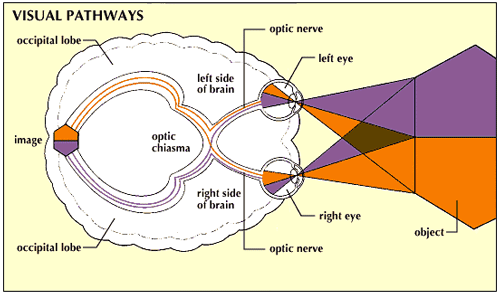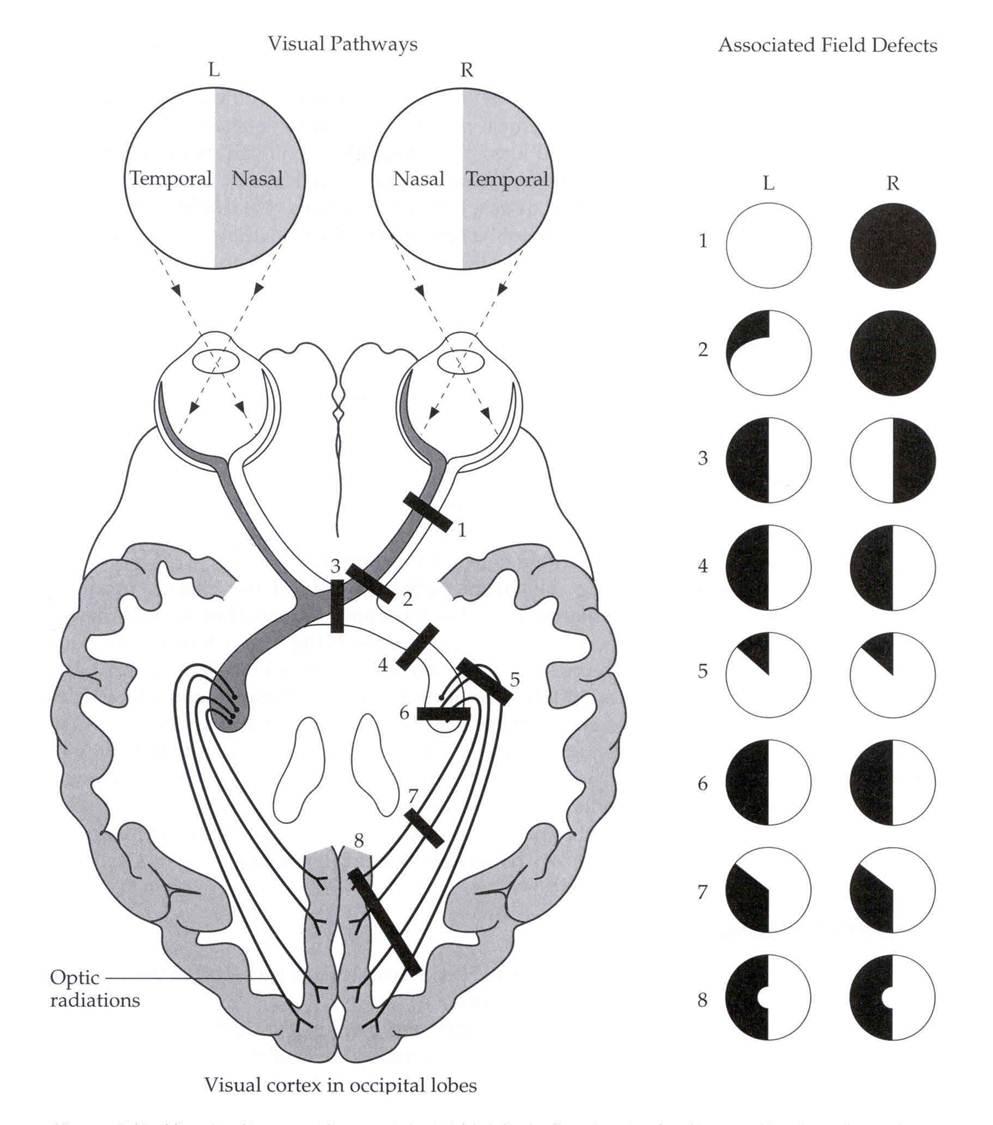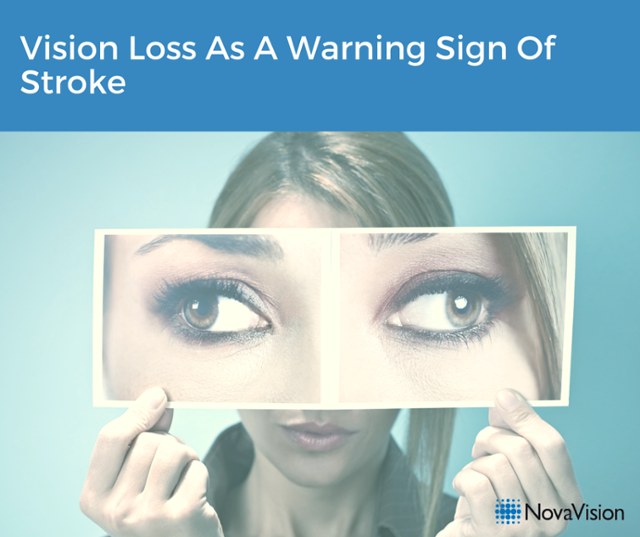Nerves from each eye travel together in the brain so both eyes are affected. A person with hemianopsia is blind to an area of peripheral vision.

10 Reasons For Vision Loss It S Better To Learn When You Re Young Vision Loss Memory Loss Visions
In some cases the patients are unable to articulate their symptoms as blindness.

Blindness Caused By Stroke. What causes an eye stroke. Most strokes affect one side of the brain. Cortical blindness consists of complete loss of visual function including perception of light and dark due to injury to both occipital lobes.
A stroke can cause a lesion in the brain involving the optic nerve that results in a hemianopsia commonly called a field cut. And 3 bioccipital abnormalities shown on CT scan are associated with a poor prognosis. It is rare for both sides of the brain to be affected by stroke.
Some stroke survivors can lose vision in both eyes after a stroke affecting both occipital lobes a condition known as cortical blindness which means that the stroke survivors eyes react to light the pupils get smaller in response to light as if he or she can still see. Reading can be a chore and therapy may involve using a line guide or a device that helps isolate the lines when reading. Aldrich MS Alessi AG Beck RW Gilman S.
The goal of vision rehabilitation in patients with stroke is to maximize visual function whether the goals are reading mobility or other activities of daily living. This is usually due to either narrowing of the blood vessels or a blood clot. Occasionally a loss of central vision is due to a type of stroke affecting the retina the light-sensitive area of nerves at the back of the eye.
Specifically if the occipital lobe or visual cortex is damaged it may result in vision impairments after stroke. Cortical blindness is often associated with an encephalopathy neurobehavioral abnormalities and. In many instances you have a short window of time for diagnosis and treatment to avoid permanent blindness.
The mortality rate varies and is a function of infarct volume. These conditions occur because of damage caused to specific regions of the visual cortex or its connecting neural network. It happens when there is a blockage in one of the blood vessels to your eye.
We conclude that 1 the prognosis in cortical blindness is poor when caused by stroke. These two parts of the brain play heavy roles in your vision. If youre not able to blink or close your eyes completely it can cause a part of your cornea the clear front surface of your eye to dry out causing your eye to feel gritty and uncomfortable.
This is called a retinal vessel occlusion. Etiology diagnosis and prognosis. If the right side of your brain is damaged the left side vision in each eye may be affected.
Depending on where in the brain the stroke occurred most patients will be blind in one-quarter to one-half of their normal field of view. This can involve several areas in both eyes. Relaxation and breathing techniques can help too.
In these types of brain injury partial blindness in the visual field the area in which objects can be seen in peripheral vision when the eyes are focussed on a central point occurs due to a disruption in the connections between the eyes and the visual processing areas of the brain. If stroke damages parts of the brain involved in visual processing it can result in vision problems after stroke. The main sign of a blockage in a retinal artery the vessel carrying blood to the retina is sudden loss of sight but you may be aware of some brief.
An eye stroke is caused by obstructed blood flow that damages the retina. The likelihood of experiencing vision loss after stroke. Vision loss can be brought on by stroke and nearly one-third of patients will develop vision loss after a brain attack.
The rate that you blink may be slower following a stroke andor you may not be able to close your eyelids completely. Sudden blindness total or near-total vision loss in one eye is a medical emergency. Everything right or left of center depending on the side.
In cortical blindness however a stroke survivor cannot see because the brain is unable to perceive the visual message. Types of vision loss. This is similar to the more common spatial hemiagnosia or spatial neglect a syndrome in which stroke survivors ignore a whole side of the world because they become unaware of that side after a stroke.
2 EEGs are more useful than visual evoked potentials for diagnosis. A person with visual hemiagnosia on the other hand may actually be able to see the right side but completely ignores it. When it does happen it can result in blindness.
Patients who have strokes that affect the vision centers in the left side of the brain will have vision loss to the right in both eyes.

Occipital Stroke Emergency Symptoms Outlook More Occipital Stroke Risk Factors Symptoms

A Complete Guide To Brain Stroke Premier Hospital

Stroke Hemianopsia Visionaware

Stroke Medicine For Stroke Physicians And Neurologists

What Is Color Blindness Causes And Symptoms Color Blind What Are Colours Eye Care

Astepaway New Search Experience Transient Ischemic Attack Carotid Artery Incontinence

American Heart Association On Twitter In 2021 Migraines Remedies Natural Headache Remedies Migraine

Right Vs Left Sided Stroke Stroke Nursing Occupational Therapy Nursing Notes

Brain Hemisphere Connections Diagnosis Treatment Strokes

Stroke Causes And Clinical Features Medicine

The Connection Between The Posterior Cerebral Artery And Vision Loss Novavision

Vision Loss As A Warning Sign Of Stroke Novavision

Did You Know Cataract Is The Most Common Cause Of Blindness Eye Health Cataract All About Eyes

Stroke Nurse Medical Knowledge Nursing Study

Pin By Anna Jakab On Neuro Arteries Anatomy Brain Anatomy Brain Stem

What Is A Stroke Or Cerebral Infarct Fibricheck

Ischemic Stroke Brain Spinal Cord And Nerve Disorders Merck Manuals Consumer Version

Stroke Brain Attack Conditions Treatments Ucla Radiology Los Angeles Westwood Manhattan Beach Santa Monica Ca

Pin By Annah Dahle On Physical Therapy Medical Dictionary Brain Stimulation Occupational Therapy